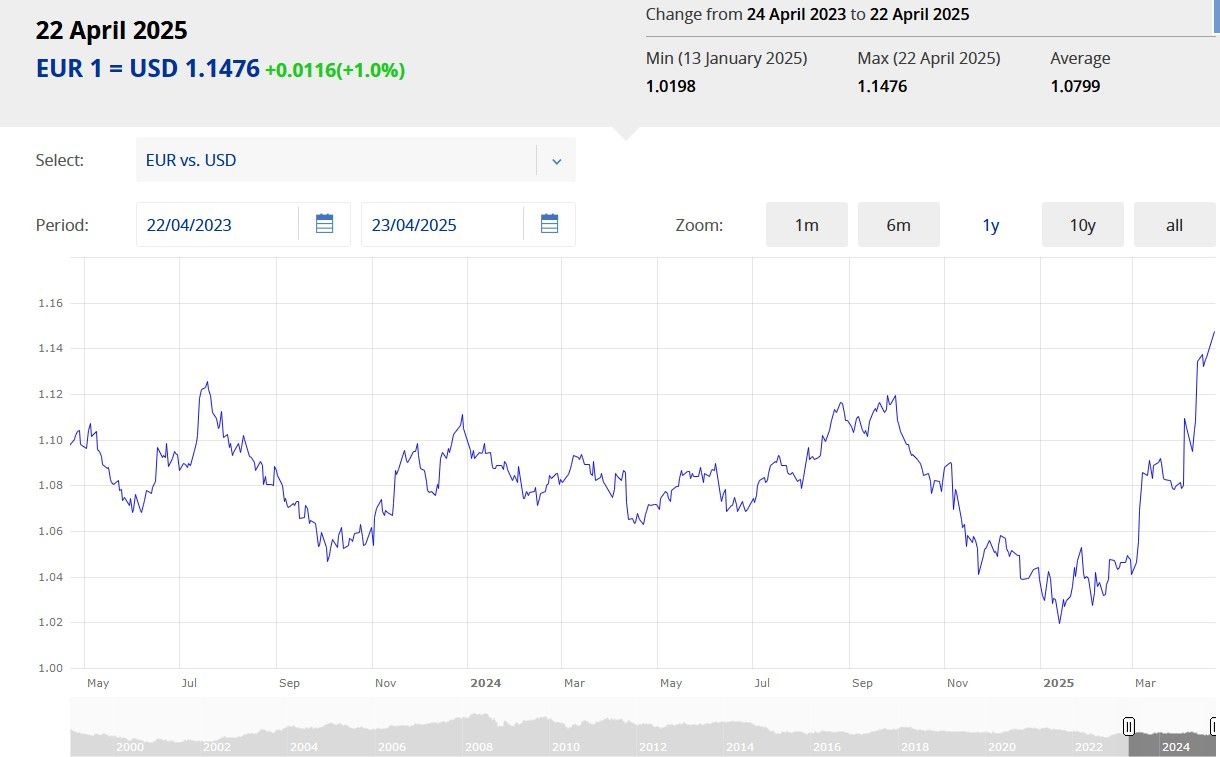The recent upward trend in the EUR/USD exchange rate has sparked renewed interest from investors, traders, and market watchers. But is this really a case of growing confidence in the euro—or simply a reflection of EUR/USD dollar weakness?
At first glance, the rally may seem like a sign that the euro is gaining strength. In reality, the situation is more nuanced. Understanding why EUR/USD is rising requires digging beneath the surface of daily price movements and headlines.

EUR/USD: Dollar Weakness, Not Euro Strength
Contrary to popular perception, the euro isn’t necessarily becoming more attractive. The primary factor behind the recent EUR/USD appreciation appears to be weakness in the U.S. dollar, driven by several interrelated developments:
-
Federal Reserve policy shifts, including expectations of rate cuts, have reduced demand for the dollar among yield-seeking investors.
-
Political uncertainty in the U.S., including debates over debt ceilings, fiscal expansion, and election-driven volatility, is creating additional downside pressure.
-
Trade tensions and tariff negotiations have also dampened dollar sentiment by threatening global supply chains and investor confidence.
-
Global liquidity conditions are shifting, with central banks around the world adjusting their positions in response to inflation and recession concerns.
These factors collectively point to a scenario where the EUR/USD rally is less about euro strength and more about dollar underperformance.
A Technical Tailwind: Cup-and-Handle Breakout
From a technical perspective, the recent movement in EUR/USD charts shows a classic “cup-and-handle” breakout—a bullish chart pattern often associated with further upward momentum.
This formation suggests that speculative interest and short-term momentum may be contributing to the pair’s strength. However, it’s important to note that technical rallies don’t always reflect underlying economic fundamentals, and they can reverse quickly if macro data shifts.
For investors and traders, this underscores the importance of pairing chart-based insights with economic analysis when evaluating currency trends.
Key Takeaway: Understand the Underlying Drivers
Whether you’re an institutional investor or simply following global markets, it’s crucial to understand the actual dynamics behind currency moves. The rise in EUR/USD doesn’t necessarily indicate growing confidence in the eurozone economy—it’s more likely a reflection of investor skepticism toward the U.S. dollar in the current macro environment.
By focusing on the “why” behind price action—not just the “what”—you’ll be better equipped to anticipate future shifts and manage risk.
Looking Ahead
As we move further into 2025, both currencies will continue to be shaped by interest rate expectations, political outcomes, inflation trends, and geopolitical events. While technical indicators might suggest further upside in EUR/USD, any sustained move will ultimately depend on the evolving fundamentals of the eurozone and the United States.
👉 Want to better understand FX trends and what they mean for your portfolio or business? Contact us to speak with our strategy team.
